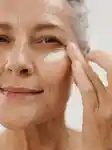Ageing
Wind back the clock.
819 results
819 results
Sort by
Election Finalist

Election Finalist

Value Set




Natural Finish
Refillable
Refillable
Refillable
Refillable
Value Set
Limited Edition
Limited Edition
Limited Edition



Related Categories
- 252
- 125
- 256
Ageing
Refresh and revive your complexion with our anti-ageing skincare range. It's completely normal for skin to change as we age – it can look thinner and feel drier, less elastic and not quite as taut. And no matter how diligent you are with sunscreen, the skin can still exhibit the signs of sun exposure, like pigmentation and sun spots. Our selection of skincare for mature skin can help to repair the signs of past damage and prevent future issues, nourishing and protecting skin so it always looks and feels its best.






